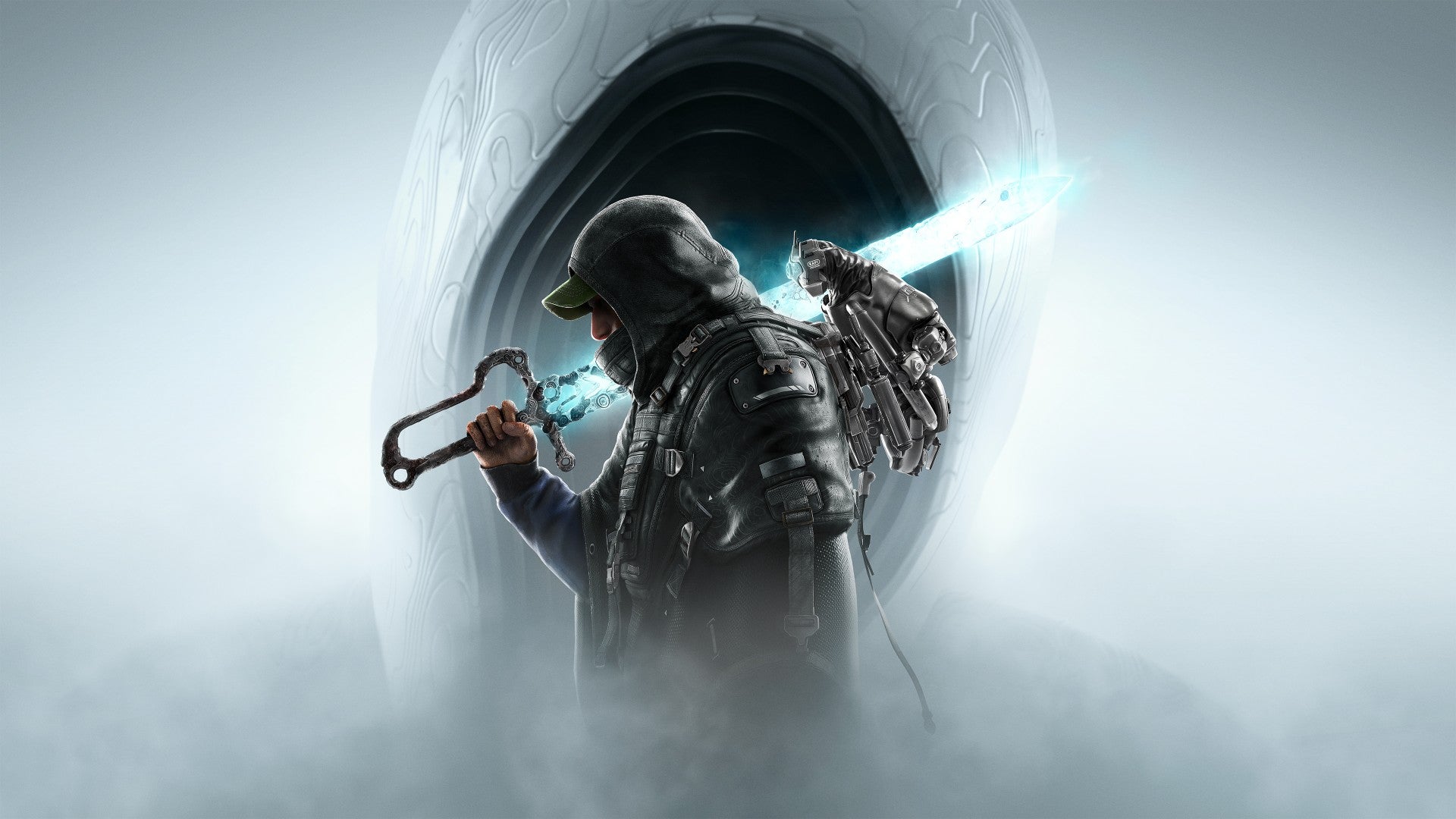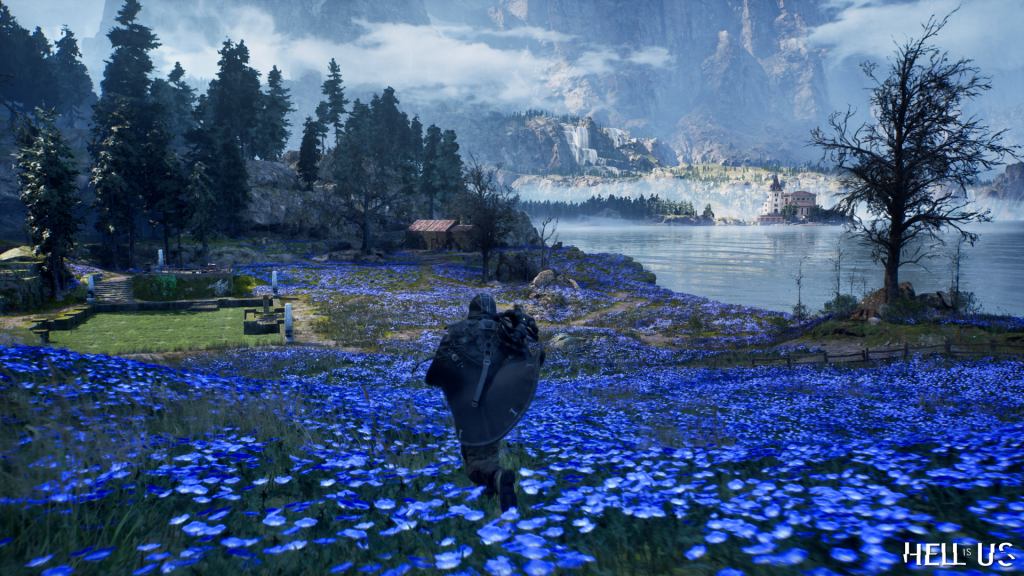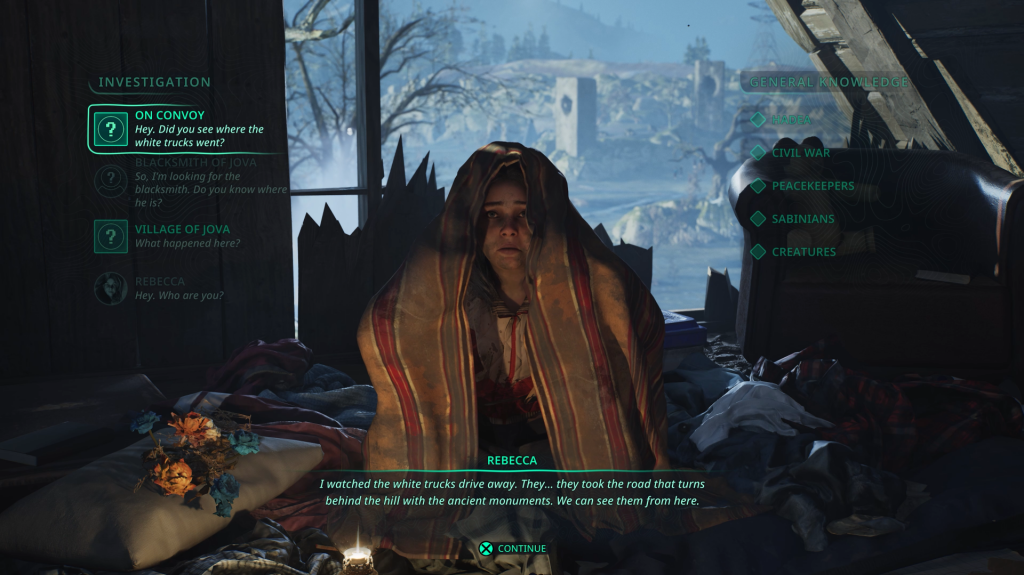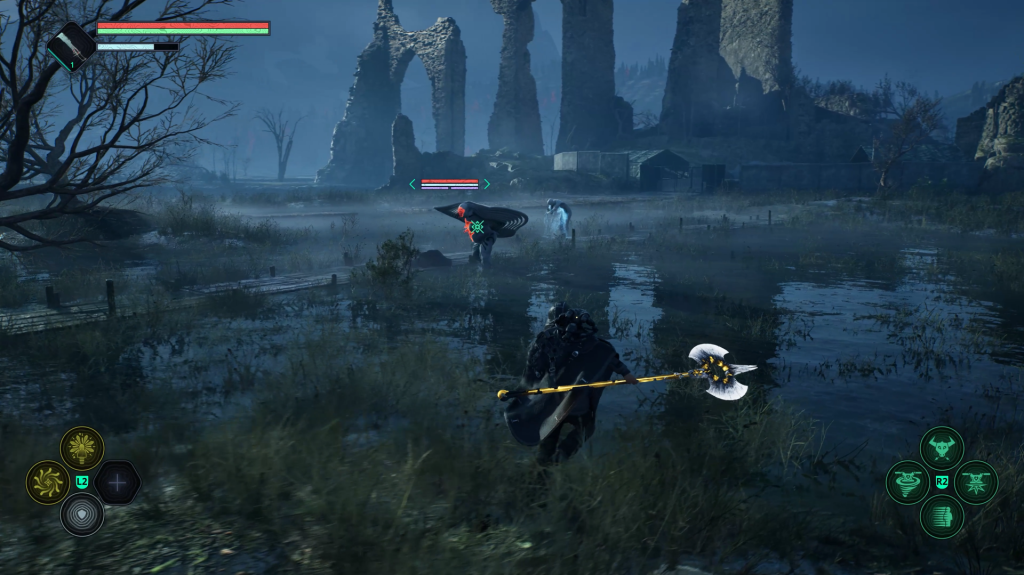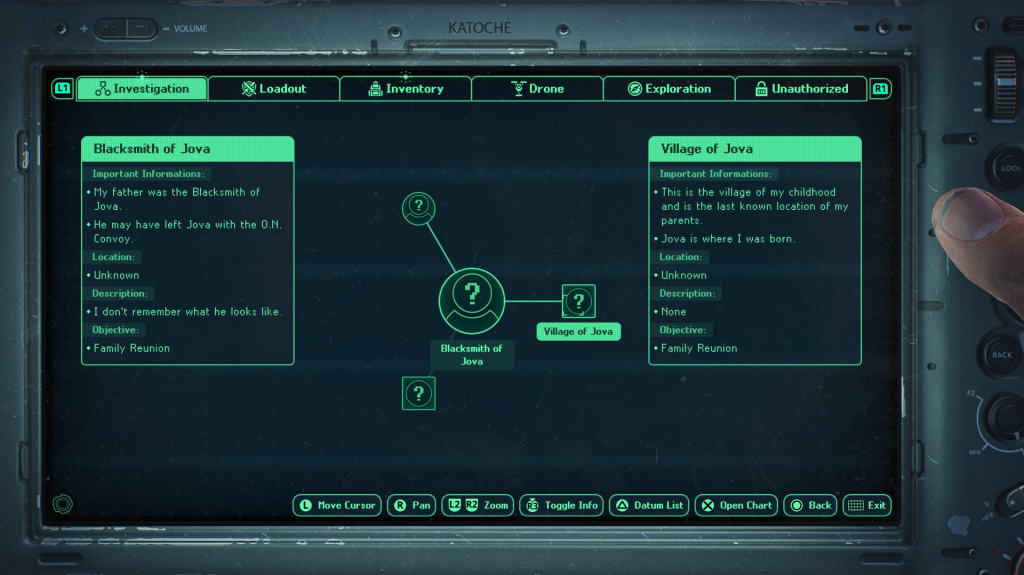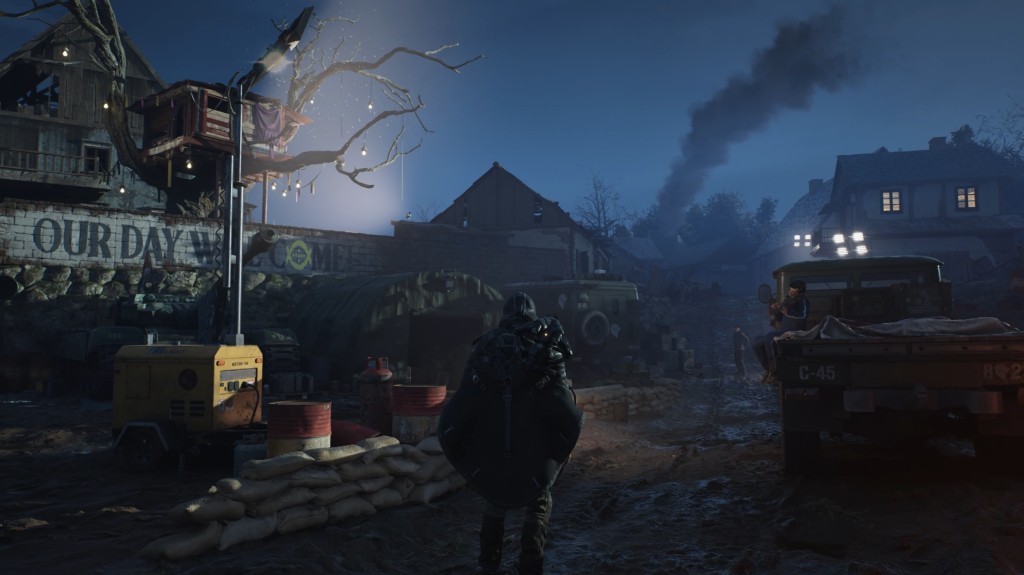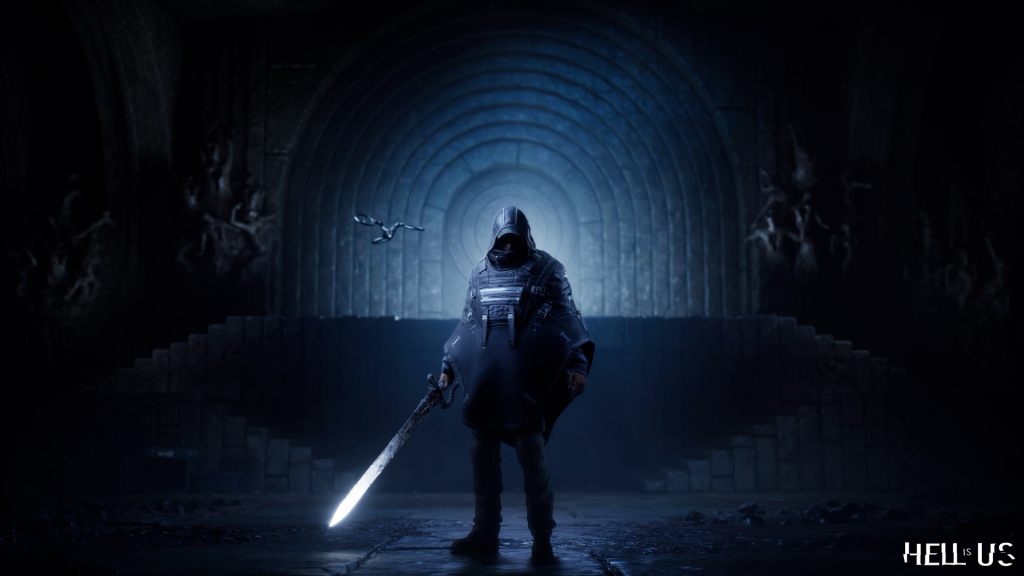In a world of constant hand-holding, where the next objective is always a glowing beacon on a mini-map and the path forward is a neon breadcrumb trail, a game like Hell is Us feels like a rebellious statement. Developed by Rogue Factor and published by NACON, this third-person action-adventure doesn’t just ask you to explore a devastated world; it demands that you inhabit it. It’s a game that asks you to pay attention, to remember, and to connect the dots yourself, and for the most part, it’s a wonderfully refreshing—if occasionally frustrating—experience. Hell is Us leans on its ambition and artistic vision to be a bold and compelling adventure that you’ll be thinking about it long after the credits roll.
Hell is Us drops you into the shoes of Rémi, a man returning to his homeland of Hadea, a country ravaged by a brutal civil war and a bizarre, supernatural “Calamity” that has turned its people into terrifying, geometric monstrosities. The setup is fantastic. Creative director Jonathan Jacques-Belletête, known for his work on the Deus Ex series, brings his signature style to a world that is equal parts gritty realism and haunting surrealism. The game’s core philosophy, a “player-plattering” approach, strips away every modern crutch. There are no quest markers, no compass, and no in-game map. Instead, you’re given a visual journal, a “mindmap” of sorts, where you can organize clues and memories. Of course, I found it better to just pause and take actual notes and draw sigils to remember later. It’s a system that feels incredibly rewarding when you solve a puzzle or find a hidden area simply by remembering a piece of dialogue or a landmark you passed an hour ago.
The game is an even split of both combat and investigation. It goes against the grain of overly guiding and hand-holding players, choosing instead to trust in their intelligence with a design that encourages them to use their instincts as well as their sense of observation and reflection. It truly lets you investigate, and gather clues for yourself. In addition, dialogue you have with NPCs becomes even more important as you have to actually listen to them, because the game won’t take notes for you.
Combat follows the rules of a Soulslike, with lock-on and needing to manage multiple enemies at once. It’s certainly more deliberate than a typical hack-and-slash. I like to say that it’s a Soulslike with forward momentum, because death doesn’t require corpse runs or needing to collect anything. Death becomes an inconvience but you’re always making progress. Rémi wields an array of melee weapons, from swords to axes, and is accompanied by a combat drone named KAPI. The core loop involves a dance of parries, dodges, and timed attacks. You’ll encounter a handful of enemy types, each with their own unique attacks, but the repetition sets in a little too quickly. The highlight is the “haze” entities, ethereal beings tied to the monstrous “Hollow Walkers” that you must first dispatch to make your enemy vulnerable. It all comes together like it should. If at any point things become too difficult, you can lower the difficulty to enjoy the story more.
This is where Hell is Us truly shines. The world of Hadea feels less like a video game level and more like a living, breathing place with a forgotten history. The environmental storytelling is top-notch. Graffiti on crumbling walls tells a story of political division, while scattered artifacts and audio logs provide haunting glimpses into a society torn apart. You’ll find yourself studying street signs, memorizing building layouts, and even taking physical notes, a practice that feels wonderfully old-school and immersive. This isn’t just about getting from A to B; it’s about uncovering the truth of a broken land and, by extension, your own fractured past. The puzzles, which are a cornerstone of the experience, are clever and well-integrated into the environment. They’re not brain-busters that require a walkthrough, but they do require you to slow down and think—a rarity in today’s gaming landscape.
The world-building here is, without a doubt, the game’s greatest triumph. The environment itself is a character, telling its story through scorched earth, abandoned homes, and the bizarre, stone-like creatures that roam the desolate landscape. You don’t just explore Hadea; you actively investigate it, piecing together its fractured past by reading notes and paying attention to every detail the developers painstakingly laid out.
The upgrade system is really fantastic, and my preferred type of them. In that, simply using weapons will upgrade as attacks and kills essentially earn experience and will level up. All of this happens without you trying too hard.
Replayability is a tricky subject for a game so heavily focused on its central narrative and exploration. Once you’ve unraveled the mysteries of Hadea, a lot of the initial discovery is gone. However, the game is dense with secrets. There are countless hidden lore items, side quests, and optional areas to uncover, and a completionist run will easily stretch the playtime to 30-40 hours or more. The satisfaction comes not from grinding for new gear or leveling up, but from the simple act of discovery itself. It’s a game that respects your intelligence and rewards your curiosity.
Visually, Hell is Us is a feast for the eyes. Built on Unreal Engine 5, the game leverages modern technology to create a world that is both grim and beautiful. The lighting in particular, is stunning, casting long shadows in city streets and illuminating the geometric distortions of the Calamity with an eerie glow. Character models are detailed, and the unsettling design of the Hollow Walkers is a standout, blending human form with abstract, geometric shapes in a way that feels genuinely alien. The artistic direction is a huge part of the game’s appeal, and it’s clear that the team at Rogue Factor poured a tremendous amount of passion into every design. Performance is really impressive and reliable. I was able to get 60fps without the crutch of Frame Generation, but once I enabled it, I was able to get a consistent and smooth 80-90fps with DLSS, Frame Generation with complete visual clarity.
My PC Specs:
– Linux (6.16.6-3-cachyos)
– Intel Core i9 13900K @ 5.8GHz
– ASUS ROG RYUJIN II 360 ARGB AIO Liquid CPU Cooler
– G.SKILL TRIDENT Z5 6000MHZ 64GB (32×2) DDR5 RAM
– ASUS ROG Strix GeForce RTX 4080 16GB GDDR6X
– WD_BLACK SN850X M.2 (4 TB)
– LG UltraGear 34GP950B-G (21:9 Ultrawide @ 3440×1440)
Hell is Us is a bold and memorable experience. It’s a game that makes a powerful statement about the state of the industry, proving that you don’t need a glowing arrow to have a compelling journey. Its unflinching approach to its narrative and its aforementioned “player-plattering” design philosophy will undoubtedly be divisive for many. Some will adore the challenge and the sense of genuine discovery, while others will find the lack of guidance frustrating. The combat doesn’t quite live up to the high bar set by the rest of the game. Hell is Us is a brilliant, bold, and beautiful action-adventure that redefines player agency. While its repetitive combat keeps it from a perfect score, its masterful world-building and commitment to a hands-off design make for an unforgettable and profoundly rewarding experience.
A Steam code was provided by the publisher for review purposes
